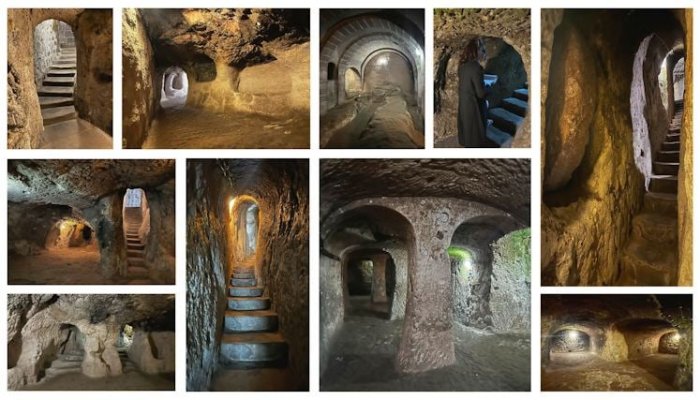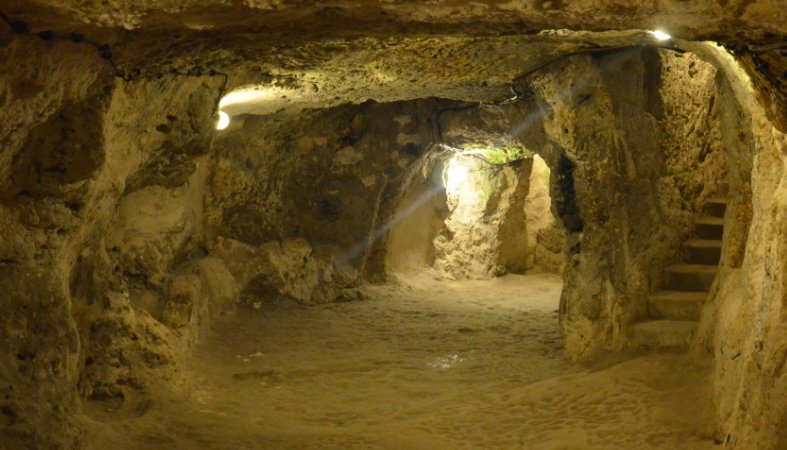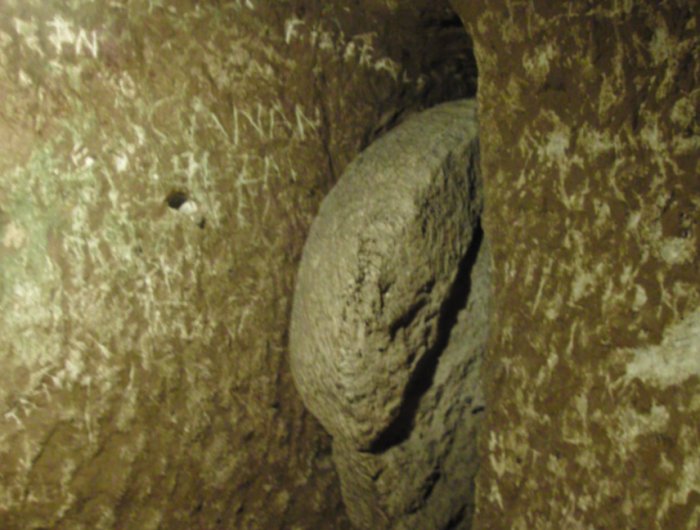Conny Waters – AncientPages.com – The 3D Virtual Soundscape is an incredible technology that transports us back in time. This time it breathes life into the ancient Turkish underground city of Derinkuyu.
A collection of images from the underground tunnels of Derinkuyu. Credit: Sezin Nas
It’s a breathtaking experience that captivates the senses and ignites the imagination.
In 1963, Omer Demir discovered a hole 50 miles south of Nevsehir, Cappadocia, Turkey, leading to passages and shafts in the bedrock. Excavation revealed Derinkuyu, a remarkable subterranean city complex with the rich history.
The ancient underground city of Derinkuyu, with its labyrinthine tunnels and hidden chambers, immediately captured the imagination of Sezin Nas. As a dedicated researcher specializing in the intricate fields of interior architecture and acoustics at Istanbul Galata University, Sezin couldn’t help but be drawn to the enigmatic attraction of this subterranean realm.
Located in modern-day Turkey, Derinkuyu was built underground to defend against invasion, protect its citizens from harsh weather, and safely store agricultural products. At its peak, it could hold up to 20,000 people. The city spanned seven levels underground, with four main ventilation channels and over 50,000 other smaller shafts.
Derinkuyu underground city. Image credit: Ahmet Kaynarpunar – CC BY-SA 3.0
“There is a notable gap in the literature regarding the acoustic environment and soundscape of underground cities,” Nas said. “Studying the Derinkuyu underground city aimed to contribute both to the preservation of cultural heritage and to provide data that could inform the design of future underground urban spaces.”
“The integration of ventilation and communication functions within the same architectural elements is considered one of Derinkuyu’s most unique features,” Nas said. “This multifunctional use of the ventilation system strongly highlights the exceptional construction process of the site and plays a central role in shaping its soundscape.”
The city of Derinkuyu, Cappadocia, Turkey could be sealed off by the so-called “rolling stone doors,” which resembled millstones Image credit: – CC BY-SA 4.0
To re-create the ancient soundscape, the researcher studied both the history of the city as well as its architecture. She analyzed three types of spaces — a church, a living area, and a kitchen. The room functions, sources of sounds, and even reverberations were considered when creating a 3D virtual soundscape that will eventually allow a listener to experience the sounds of the city.
Nas will present work on the soundscape of the ancient city of Derinkuyu on Wednesday, May 21, at 11:20 a.m. CT as part of the joint 188th Meeting of the Acoustical Society of America and 25th International Congress on Acoustics, running May 18-23.
“Derinkuyu underground city is considered an interior environment on an urban scale, which distinguishes it from the open-space urban soundscapes,” Nas said. “Listening to the reconstructed soundscape provides insights into how sound influenced spatial experience, communication practices, and social organization within the underground city.”
Nas said that Derinkuyu’s soundscape can inspire the design of future underground urban spaces. She hopes that, in general, soundscapes will be used in the future as systematic tools for studying history.
“This research also highlights the role of historical sound environments as an important and often overlooked component of cultural heritage,” Nas said.
Written by Conny Waters – AncientPages.com Staff Writer




